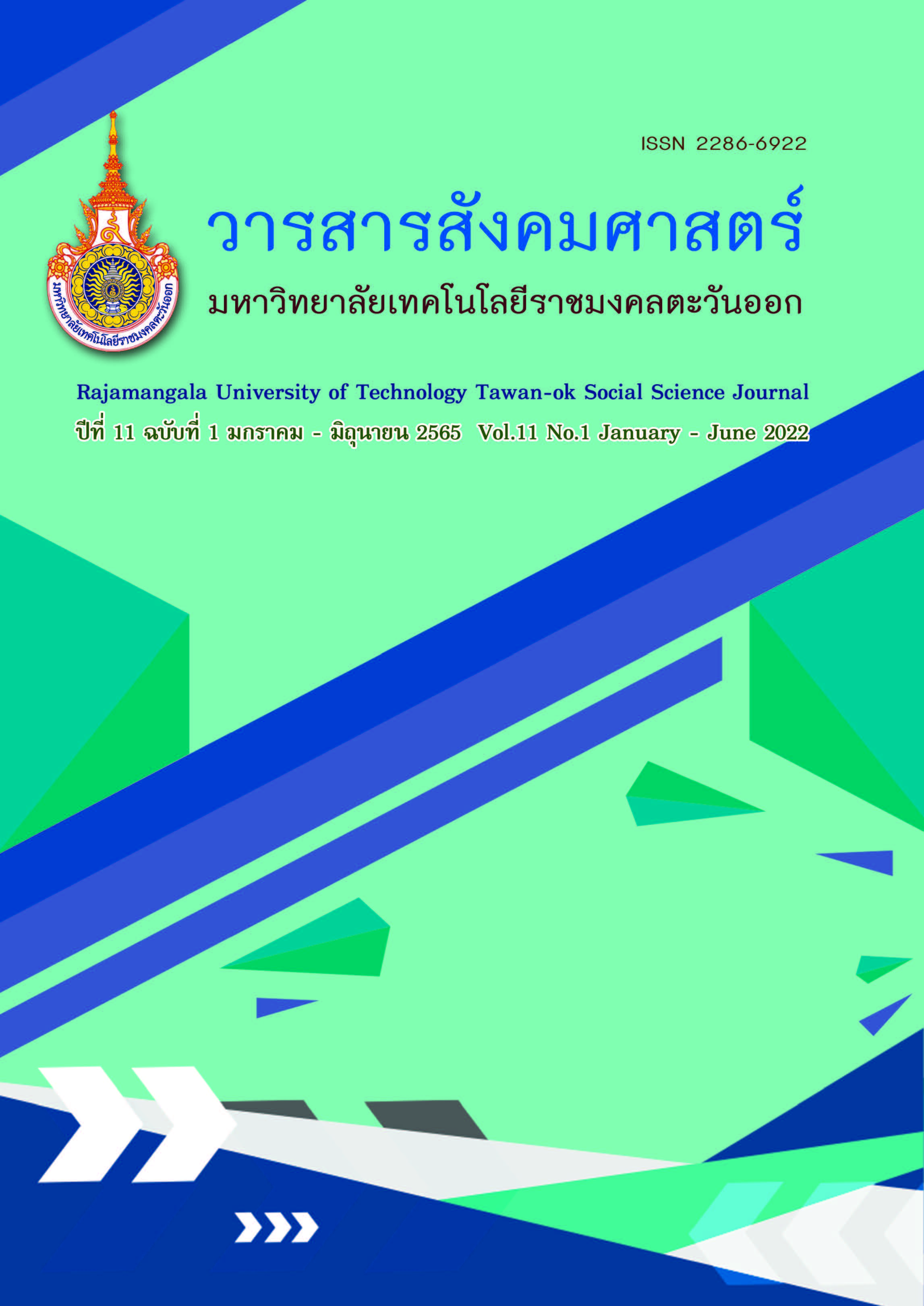Using Jigsaw Listening Technique With Metacognitive Strategy Instruction To Solve The Listening Comprehension Problems Of Air Cadets: A Case Study Of The Second Year Air Cadets At Navaminda Kasatriyadhiraj Royal Air Force Academy
Main Article Content
Abstract
The purposes of this research were 1) to study the effectiveness of learning activities and developing English listening comprehension by using Jigsaw listening technique with metacognitive strategy instruction lesson plans that meet the 70/70 criteria, 2) to study the effectiveness index of development of learning in English listening comprehension by using Jigsaw listening technique with metacognitive strategy instruction lesson plans, 3) to compare Air cadets’ improvement in listening comprehension skills between Jigsaw listening technique with metacognitive strategy instruction and conventional teaching method, and 4) to investigate Air cadets’ attitudes toward learning activities by using Jigsaw listening technique with metacognitive strategy instruction lesson plans. The sample group was 40 second year Air cadets enrolled in HU202 subject on the second semester, academic year 2021, Navamindha Kasattriyadhiraj Royal Air Force Academy, Royal Thai Air Force. All participants were selected based on their listening comprehension score from previous semester in HU201 subject that was under 70 percent. The instruments used in the study were 1) 15 lesson plans designed by using Jigsaw listening technique with metacognitive strategy instruction, 2) TOEIC Listening Comprehension Mock test 100 questions 3) a questionnaire used to survey the Air cadets’ opinions on the English listening comprehension by using Jigsaw listening technique with metacognitive strategy instruction lessons. The experimental process and data collection were 1) the subject completed the 100 Pre-TOEIC Listening Mock Test before the treatment through 15 lessons, 2) the lesson took 15 weeks of the second semester of academic year 2021, and 3) after all 15 lessons, the post-TOEIC Listening Mock Test and the questionnaire were administered. The data were analyzed by percentage, mean, standard deviation and t-test. The findings revealed that 1) the efficiency of learning activities and developing English listening comprehension by using Jigsaw listening technique with metacognitive strategy instruction lesson plans was 90.30/84.10 which met the criteria of 70/70, 2) the effectiveness index of lesson plans by using Jigsaw listening technique with metacognitive strategy instruction was 0.6154, this means that Air cadets had improved their listening comprehension skills with the accounted score of 60.42 percent, 3) listening achievement after using the 15 lesson plans was significantly higher than the conventional teaching listening comprehension lesson plans at the .05 level. 4) The Air cadets had positive opinions towards the lesson plans using Jigsaw listening technique with metacognitive strategy instruction with an average of 4.43. Learning through Jigsaw listening technique with metacognitive strategy instruction provided opportunities for learners to give a presentation creatively as well as to share their opinions within the jigsaw group.
Article Details

This work is licensed under a Creative Commons Attribution-NonCommercial-NoDerivatives 4.0 International License.
References
กุสุมา ล่านุ้ย. (2538). การสอนภาษาอังกฤษเพื่อการสื่อสารระดับมัธยมศึกษา. โรงเรียนสาธิตคณะศึกษาศาสตร์ มหาวิทยาลัยสงขลานครินทร์.
คณะกรรมการการอุดมศึกษา. (2559). ประกาศคณะกรรมการการอุดมศึกษา เรื่อง นโยบายการยกระดับมาตรฐาน ภาษาอังกฤษในสถาบันอุดมศึกษา. กรุงเทพฯ : โรงพิมพ์แห่งจุฬาลงกรณ์มหาวิทยาลัย.
ชายุดา จันทะปิดตา. (2555). การพัฒนาแบบฝึกเสริมทักษะการฟังภาษาอังกฤษเพื่อการสื่อสารสำหรับนักเรียน ชั้นมัธยมศึกษาปีที่ 4 โรงเรียนบัวหลวงวิทยาคม จังหวัดบุรีรัมย์. วิทยานิพนธ์ ศศ.ม. มหาวิทยาลัยศิลปากร กรุงเทพฯ, ถ่ายเอกสาร.
ทัศนีย์ องค์สรณะคมกุล. (2546). การพัฒนาแบบฝึกทักษะการฟังภาษาอังกฤษเพื่อการสื่อสาร สำหรับนักเรียนชั้น ประถมศึกษาปีที่ 4 โรงเรียนสาธิตแห่งมหาวิทยาลัยเกษตรศาสตร์ วิทยาเขตกำแพงแสน จังหวัดนครปฐม. มหาวิทยาลัยศิลปากร/กรุงเทพฯ. DOI:https://doi.nrct.go.th/ListDoi/listDetail?Resolve_DOI=10. 14457/SU.the.2003.91
บัญชา อึ๋งสกุล. (2541). การเสริมสร้างการเรียนการสอนภาษาอังกฤษในโรงเรียน. วารสารวิชาการ 1 (กุมภาพันธ์ 2541), น.63. .
มณีรัตน์ กรรณิกา และ อภิราดี จันทร์แสง. (2560). การพัฒนาทักษะการฟังโดยใช้รายการโทรทัศน์ของนักเรียนชั้น มัธยมศึกษาปีที่ 3. วารสารมหาวิทยาลัยราชภัฏร้อยเอ็ด. ปีที่ 11(2).
สุมณฑา พรหมบุญ. (2540). ทฤษฎีการเรียนรูแบบมีส่วนร่วม. กรุงเทพฯ : สำนักงานคณะกรรมการการศึกษาแห่งชาติ กรุงเทพมหานคร : พริกหวานกราฟฟิค.
สุมิตรา อังวัฒนกุล. (2540). วิธีสอนภาษาอังกฤษ. กรุงเทพมหานคร : สํานักพิมพ์จุฬาลงกรณ์มหาวิทยาลัย. พิมพ์ครั้งที่ 4
Adams, F. H. (2013). Using jigsaw technique as an effective way of promoting co-operative learning among primary six pupils in Fijai. International Journal of Education and Practice, 1(6), pp.64-74.
Alfaruqy, D., (2021). The implementation of the jigsaw technique to increase students’ listening achievement and Motivation Aspects. ELE Reviews: English Language Education Reviews, 1(1), pp.22-40.
Bankole-Minaflinou, E. (2018). Using Authentic Materials in EFL Classes in Benin for Communicative Competence. International Journal on Studies in English Language and Literature. pp. 8-19.
Citra Dewi, R. (2018). Utilizing Authentic Materials on Students’ Listening Comprehension: Does it have Any Influence. Advances in Language and Literary Studies. Vol 9 (1).
Djudin, Tomo. (2017). Using Metacognitive Strategies to Improve Reading Comprehension and Solve a Word Problem. JETL (Journal Of Education, Teaching and Learning). 2. 124. DOI: 10.26737/ jetl.v2i1.151.
Goh, C. & Taib, Y. (2006). Metacognitive instruction in listening for young learners. ELT Journal, 60, pp. 222-232.
Graham, S., & Macaro, E. (2008). Strategy instruction in listening for lower-intermediate learners of French. Language Learning, 58, pp. 747-783.
Hinkel, E., (2011). Handbook of Research in Second language teaching and learning 1st Edition. New York: Routledge.
Im, G. H., & Cheng, L. (2019). The test of English for international communication (TOEIC®). Language Testing, 36(2), pp. 315-324.
Kim, H.-S. (2015). Using authentic videos to improve EFL students’ listening comprehension. International Journal of Contents, 11(4), pp.15-24.
Nunan, D. (1999). Second Language Teaching and Learning. Boston.
O’Malley, J. M., & Chamot, A. U. (1990). Learning strategies in second language acquisition. Cambridge, UK: Cambridge University Press.
Richards, J. C., & Schmidt, R. W. (2013). Longman dictionary of language teaching and applied linguistics. Routledge.
Rost, M. (1994). Introducing Listening. London: Penguin books.
Vandergrift, L. (2003), Orchestrating Strategy Use: Toward a Model of the Skilled Second Language Listener. Language Learning, 53. pp.463-496. https://doi.org/10.1111/1467-9922.00232
Vandergrift, L. (2011). Second language listening. Handbook of research in second language teaching and learning, 2, pp. 455-471.


